1. Killing the Internet
On January 28, 2011, only a few days after protests had broken out in Egypt demanding the overthrow of then president Hosni Mubarak, the Egyptian government terminated national access to the internet. This state-sponsored shutdown became known as flipping the internet’s “kill switch.” The intention behind killing the internet in Egypt was to block protestors from coordinating with one another, and prevent the dissemination of any media about the uprising, especially to those outside of the country. Peculiarly, it is a death that only lasted five days, as internet access was soon reinstated. More precisely, the internet kill switch unfolded as a series of political demands and technical operations. Egyptian internet service providers, such as Telecom Egypt, Raya, and Link Egypt, were ordered to cancel their routing services, which had the effect of stymying internet connectivity through these major companies. Fiber-optic cables were another target, as the small number of such cables linking Egypt to international internet traffic are owned by the Egyptian government. As a result, 88 percent of internet connectivity in Egypt was suspended in a matter of hours. Notably, the only ISP that remained active during this period was the Noor Data Network, which is used by the Egyptian Stock Exchange.
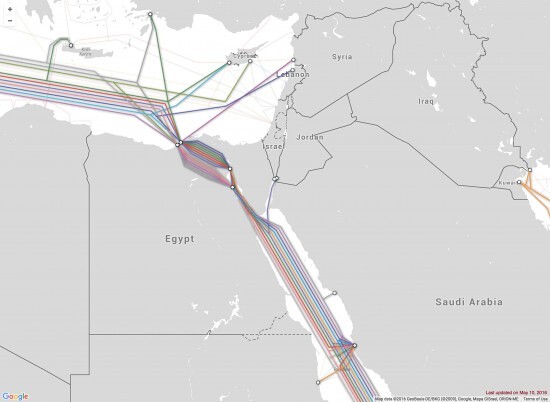

What does it mean to kill the internet?1 If one attempted to physically locate where the internet was killed in Egypt, one might go to the Telecom Egypt Building at 26 Ramses Street in Cairo, just four kilometers from Tahrir Square, which is the major fiber-optic connection point going into and out of Egypt. But can technical infrastructure be killed? Or, can technical infrastructure die a political death, like the more than eight hundred people killed during the uprising? If the internet did die, then it was also resurrected, while the protestors remain dead. Is the internet undead then, like a zombie? To understand withdrawing access to the internet as killing emphasizes a potentially grievable loss or a violation of international human rights laws, as the United Nations claims.2 This is confusing though. If the internet was killed by the Egyptian government, then it must be assumed that the internet is on the side of the revolutionaries; however, internet infrastructure is fully controlled by the state. If the internet was, in fact, killed in Egypt, then it was both a suicide and a murder. Put simply, it was an act believed to curtail revolution, but the Egyptian government failed to see the potential for political struggle after the internet’s death—as though the desire for political change can only persist within telecommunications itself.
The events in Egypt are not isolated. A whole minor history of the internet is waiting to be told, not based on its core contribution to the project of globalization but rather on political blockage and impasse; not a history of total flatness, global villages, and linkability but of sharp breaks, dead ends, and back doors: a history of when the internet ceases to exist. During the 2007 Saffron Revolution in Myanmar, internet access was blocked throughout the country. In 2014, in the aftermath of the Gezi protests in Istanbul, Turkish prime minister Recep Tayyip Erdoğan banned access to Twitter. Since 2014, Iraq has frequently imposed internet blackouts, as has Nepal since as early as 2005. In North Korea, citizens have little-to-no access to the internet, instead using a domestic-only network called Kwangmyong. Websites are regularly filtered and censored not only in China—through what is nicknamed The Great Firewall of China—but also in many European countries, like the United Kingdom. In the United States the internet has never been shut down, but it has become a refined crystallization and extension of an extremist surveillance state.
In 1994, then US vice president Al Gore prophesized that a coming Global Information Infrastructure would spread participatory democracy worldwide. Consider where we are now: in November 2015, at a campaign rally in South Carolina, US Republican presidential candidate Donald Trump called for “closing that internet up” to curtail ISIS’s internet recruitment efforts.3 Trump’s demand for an internet shutdown confirms that the killing of the internet is not reserved for countries deemed totalitarian, but is also conducive to Western democracy. In the US, the death of the internet is the refashioning of network infrastructure into a smooth site of capital accumulation and governmental control. Masses camp on city sidewalks—in front of Apple stores and Walmarts alike—in manic anticipation of the newest networked commodities, whose shiny black surfaces belie algorithmic subterfuge by states. Online, Trump’s dreaded freedom of speech is morally policed by a sprawling content management workforce, operating under undisclosed guidelines, whose blocking of uploads reminds us that YouTube and Facebook were never agoras for freedom of expression to begin with. At the helm, as it were, is the internet user, a biopolitical subject engineered by corporations and possessed of a dazed and addictive subjectivity that hungers for feeds that never stop, clickbait that always demands another click, and content generators that multiply browsing tabs until a computer crashes.
What is the internet’s historical present? To answer this question, we must first make a basic observation: contrary to media theorist Marshall McLuhan’s insistence that media is an extension of man, the internet—a paradigmatic example of media—has become an extension of control.
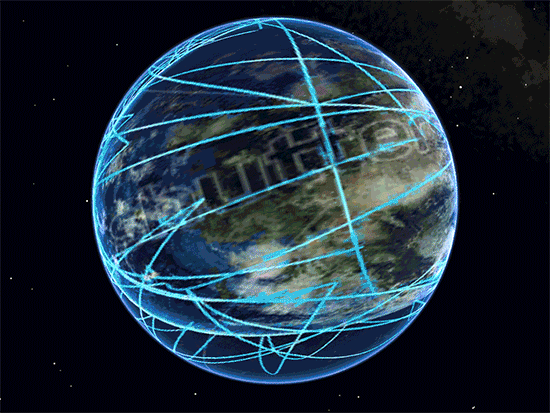

2. Disappearing the Internet
At the World Economic Forum in 2015, Google chairman and ex-CEO Eric Schmidt promised that “the Internet will disappear” into our environments.4 What is the difference between killing and disappearing the internet? Schmidt elaborates: “there will be so many IP addresses … so many devices, sensors, things that you are wearing, things that you are interacting with, that you won’t even sense it. It will be part of your presence all the time.”5 Here disappearance is the opposite of an internet shutdown. It is the elimination of the possibility of killing, a guarantee of total integration, seamlessness, and dispersion. To disappear the internet is to dissolve its infrastructures into the very materialities that compose contemporary life and the world. Internet = a new chemical element. An eye that is always GoogleGlass. A surface whose interactivity never falters. A transparent city where your personal data is your gateway to culture and entertainment. A cloud to aid a body that does not stop producing data, except perhaps in death. Rest assured, the disappearance of the internet is the emergence of the internet of things, a technological promise to reengineer all objects and beings as ontologically networkable.
Of course, this also represents the exacerbation of our neoliberal condition. Governance is now a rhizome gone bad, as networks that are assumed to be immortal unleash a torrent of rapid flows aimed at protocological control and management, in which all life is networked, administrated, and programmable. The internet disappears into the corporate stranglehold of Silicon Valley, only to become the latest tool for incessant global surveillance, as evidenced by the NSA in the US and GCHQ in the UK. And just as the internet disappears into floating data centers off the coast of California, it reappears as e-waste from the West dumped throughout the Global South. The disappearing act that Schmidt predicts for the internet remains purely technical and misses the point that the internet is also disappearing into us by becoming a mode of subjectivation, a set of feelings, a sense of longing, a human condition, a metanarrative.
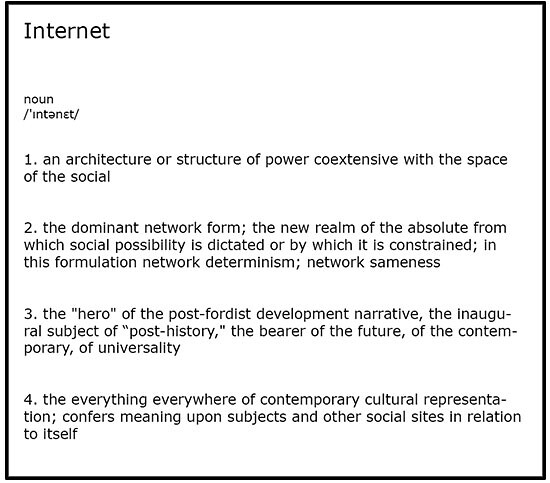

Out of this vortex of killings and disappearances emerges a definition of the internet that goes far beyond its technical infrastructure: the internet as a totalized sociocultural condition. Like capitalism, the internet has come to exist as a totality, with no outside, no alternative, no ending. This provokes a question that Julian Assange once asked: Is the future of the internet also the future of the world? Once the internet disappears into the world—and the world becomes a global image of the internet—does this mean that in order to undo such a teleological trajectory, it is necessary to think beyond the world? If Eric Schmidt can think beyond the internet, why can’t we?
This is the task I present: to discursively and practically transform “the internet” in order to locate the potentialities of a militant alternative or outside to the totality the internet has become. I turn to my mentors in minoritarian politics, particularly queers and feminists, as struggles for alternatives to domination and control are of the utmost importance.
3. Postcapitalist Politics
In 1996, the theorist(s) J. K. Gibson-Graham published the book The End of Capitalism (As We Knew It), introducing a particularly feminist take on postcapitalist politics. In part, Gibson-Graham aim their critique at Marxist philosophers—mostly men—who argue that capitalism has no outside. According to Gibson-Graham, this argument has the curious effect of nullifying any anticapitalist project—including the professed project of Marxism! Against such a monolithic view, Gibson-Graham expose thriving economic alternatives that exist within the supposedly totalizing frame of capitalism. For Gibson-Graham, “postcapitalist” does not refer to a time after the totalization of capitalism, but rather economic alternatives at play within capitalism itself. They coin words like “capitalocentric,” a term that critiques the Left for not being able to think outside or beyond capitalism.6 By shifting from thinking totality to thinking possibility, Gibson-Graham perform a much-needed intervention into anticapitalist politics.
What might become thinkable if we engage the internet through postcapitalist politics? What becomes possible when Gibson-Graham’s critique is aimed at the internet as a totalized and hegemonic form of contemporary life? Certainly a different definition of “post-internet” emerges, referring now to network alternatives, like mesh networks, and cryptographic practices that have taken root within the supposedly totalized frame of the internet. A new post-internet vocabulary follows, starting with the word “internetocentric”—the inability to think beyond or outside of the internet. Tested in a sentence: “Zach struggles with being internetocentric, even though he longs for a political horizon beyond the internet.”
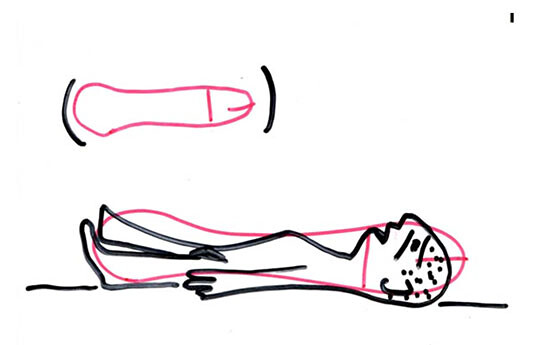

4. Contrasexuality
In his Manifesto Contrasexual (2001), Paul Preciado advances the queer concept of “contrasexuality.” Described as a refusal of sexual norms, contrasexuality prohibits any articulation of sexuality as naturalized. Indeed, speaking the word forces one to say “against sexuality”—that is, against an understanding of sexuality as constituted by dominating and hegemonic powers. The body and sexuality are sites of struggle for power and politics. To enact contrasexuality, then, is to performatively and perversely produce contra-pleasures in the body, which in turn evokes a utopian horizon of political transformation. Contrasexuality is at once a refusal, and the constitution of an alternative. How, then, might we practice “contra-internet” politics?
Preciado explains that contrasexuality can be practiced through “dildotectonics,” the “experimental contra-science” of dildos.7 The dildo is the chosen contrasexual form because it is both external to the body and undoes the assumption that the body is a totalized heterosexual unit. In fact, Preciado claims that the body can be mapped out entirely as a dildo, which suggests that it can be transformed into pure contrasexuality. A body as dildo is sexually unnaturalized, reconfigured, made into a transgressive prosthesis. Significantly, the dildo does not reduce the body to a phallus, as it is not an emblem of patriarchy for Preciado. This is why a penis can be considered a meat dildo, but a dildo can never be a plastic penis. As evident in Preciado’s drawings, the contrasexual dildo is a diagrammatic form that, when experimented with, reveals the potentialities of sexuality beyond the heteronormative and the phallocentric. Preciado goes so far as to generously offer a set of “dildotopia” exercises, such as drawing a dildo onto one’s arm and masturbating it like one is playing the violin.
What are the dildotectonics of the internet? Put differently, if the dildo is a form adequate to exposing the norms and constructions of sexuality, then what is the form adequate to revealing the internet as totality? An initial yet insufficient response might be: the network. The internet may be comprised of networks, but a network is not necessarily the internet. However, the network links life to the dominant forms of governance and control today. So just as the dildo’s form is external to the body, perhaps a contra-internet form must be external to the internet—must be something other than a network. What might be outside networks?
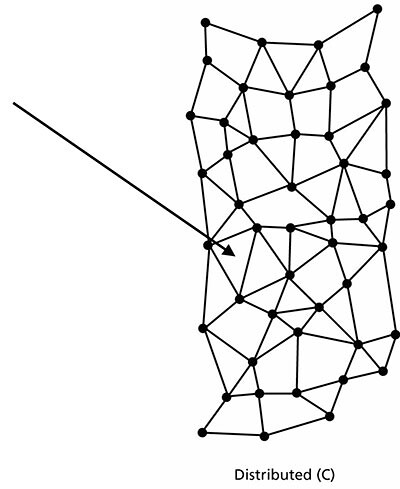

5. Paranodes
In “The Outside of Networks as a Method for Acting in the World,” a chapter from his 2013 book Off the Network, Ulises Ali Mejias introduces the “paranode,” a term that conceptualizes that which is other to—or an alternative to—a network configuration. The paranode is an antidote to “nodocentrism,” which, argues Mejias, is the dominant model for organizing and assembling the social. Derived from neuroscience, the paranode is the space that networks leave out, the negative space of networks, the noise between nodes and edges. It is the space that “lies beyond the topological and conceptual limits of the node.”8
Consider this seminal network diagram by engineer Paul Baran. The diagram is of a distributed network, which is commonly used to explain the functionality of the internet, where any node can connect to any other node. The paranodal space is indicated. While this space is bound by nodes and edges, it is not constituted by that architecture. Within this seemingly empty white space, we must look much closer. When we do, we see that the paranode positively demarcates the before, after, and beyond of networks. Since its form is multitudinous, it might best be thought of as a collection of dildos for the internet, rather than a single dildo.
In a recent conversation with David M. Berry, Alexander R. Galloway combatted the crushing totality of nodocentric thought that obscures the paranodal:
Today we are trapped in a sort of “networked” or “reticular” pessimism … reticular pessimism claims, in essence, that there is no escape from the fetters of the network. There is no way to think in, through, or beyond networks except in terms of networks themselves … We have a new meta-narrative to guide us … By offering no alternative to the network form, reticular pessimism is deeply cynical because it forecloses any kind of utopian thinking that might entail an alternative to our many pervasive and invasive networks.9
Galloway’s reticular pessimism destabilizes the nodes and edges of the network form. Cracks and fissures appear out of what were once straight lines and solid dots. The outside’s force is felt and an opening to the paranode appears. It is the moving toward such an opening that marks the beginning of all contra-internet politics.
6. Antiweb
I would like to end with a different kind of example of the internet ceasing to exist. During the 2014 pro-democracy demonstrations in Hong Kong, protestors, concerned that the Chinese government might surveil or shut down the internet, sought an alternative networking platform. They used FireChat, a mesh-networking device for smartphones that enables autonomous networking without connecting to mobile phones or Wi-Fi networks. Protestors thus digitally networked without connecting to the internet. Although FireChat does not break from the network form into the space of the paranodal, it does generate antiwebs, or networking alternatives to the undead World Wide Web. Reassuringly, such activity is not isolated: mesh networking has been used in New York during Occupy, as well as in Detroit, Taiwan, and Iraq. These events illustrate an emergent network militancy whose goal is to expose the inadequacies of the internet as a political horizon and also offer a utopian glimmer of another kind of network. It could be said that these practices present to us, quite stunningly, the end of the internet (as we knew it).
But the internet’s end is also the paranode’s beginning. The paranode is the horizon, the site of futurity that contra-internet practices move toward. As contra-infrastructure and theoretical model, the paranode proposes two militancies: the practical search for antiwebs, which is not a killing or disappearing but a commons to come; and the intellectual task of making thinkable that which is not only outside the internet but also beyond the network form itself.
As the Zapatistas might say, let us approach the internet at the speed of dreams.
Hito Steyerl explored the death of the internet in “Too Much World: Is the Internet Dead?,” e-flux journal no. 49 (November 2013). Steyerl’s essay begins: “Is the internet dead? This is not a metaphorical question. It does not suggest that the internet is dysfunctional, useless or out of fashion. It asks what happened to the internet after it stopped being a possibility. The question is very literally whether it is dead, how it died and whether anyone killed it.” →.
See “Joint Declaration on Freedom of Expression and responses to conflict situations,” UN Office of the High Commissioner for Human Rights, 2015 →.
Sam Frizell, “Donald Trump Wants to Close Off Parts of the Internet,” Time, December 15, 2015 →.
Dave Smith, “GOOGLE CHAIRMAN: ‘The Internet Will Disappear,’” Business Insider, January 25, 2015 →.
Ibid.
J. K. Gibson-Graham, The End of Capitalism (As We Knew It) (Minneapolis: University of Minnesota Press, 2006), 6.
Beatriz Preciado, Manifesto contrasexual (Madrid: Anagrama, 2011).
Ulises Ali Mejias, Off the Network: Distrupting the Digital World (Minneapolis: University of Minnesota Press, 2013), 153.
David M. Berry and Alexander R. Galloway, “A Network is a Network is a Network: Reflections on the Computational and the Societies of Control,” Theory, Culture & Society, 2015: 7.
This essay was originally commissioned by Rhizome as a lecture performance that premiered in April 2016 at Whitechapel Gallery in London, as part of the exhibition “Electronic Superhighway.” An earlier companion to this essay, entitled “Contra-Internet Aesthetics,” was featured in the book You are Here: Art After the Internet, edited by Omar Kholeif and published by Cornerhouse in 2013.

